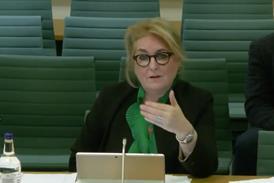Millington and Sutherland Williams on The Proceeds of Crime (fifth edition)
Judge Mark Sutherland Williams, His Honour Judge Michael Hopmeier and Rupert Jones
£175, OUP
The modern law of confiscation of ill-gotten gains has been on the statute book for 15 years, but is still often viewed as esoteric and complex. Restraint Orders do not restrain the property, but the alleged offender’s freedom to deal. Confiscation does not remove property from the offender but sets an amount of money that the criminal has to pay.
The difficulty is not only in terms of definition. There is an uneasy and some might say irreconcilable tension within the legislation as to whether confiscation is intended only to deprive the wrongdoer of the benefit of their offending, which most would hold is appropriate and just, or whether it is also to punish the offender and deter him and others from doing likewise. Assumptions that follow from the proof of a so-called ‘criminal lifestyle’ offence, which the defendant has to disprove to the civil standard, add to this dichotomy. They may well contribute to the non-collection of orders made under the Proceeds of Crime Act 2002 (£1.9bn outstanding as of March 2016), where the administrative costs of enforcement (such as the appointments of receivers) eat up the value of the monies to be recouped.
The estimable authors of the latest edition of this work lament that, in 2014, fewer than 6,000 confiscation orders were made regarding 64,000 qualifying offenders, and query whether there is less enthusiasm among the plethora of law enforcement agencies that can exercise POCA powers to do so. The authors point out that there is no coherent strategy to achieve this, or any agreed ‘performance measures’.
This book is an excellent successor to past editions and provides the busy investigator, practitioner and judge with an easily accessible guide to the subject.
Two minor quibbles: the section on investigatory powers would more naturally be set out at the beginning of the book rather than midway through those sections that discuss the substantive orders. Could there also be dividing ribbons to allow cross-referencing?
Adrian Lower is a district judge (magistrates’ courts)




























No comments yet